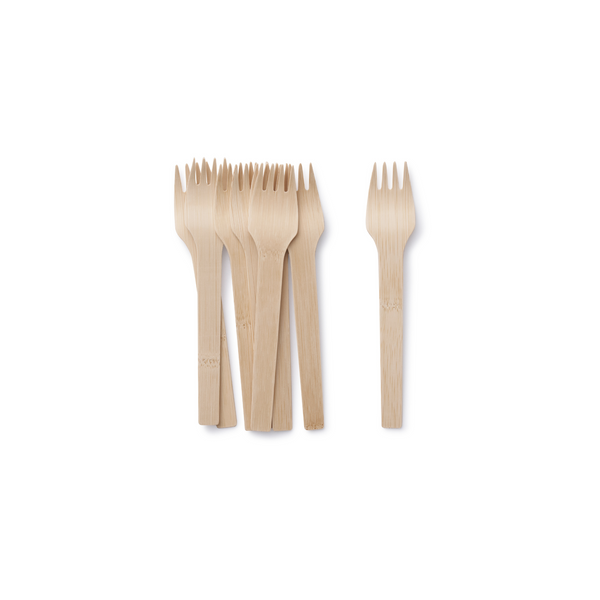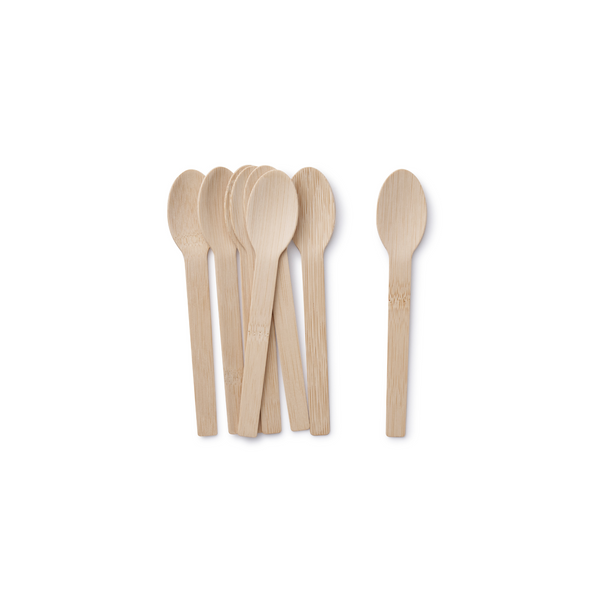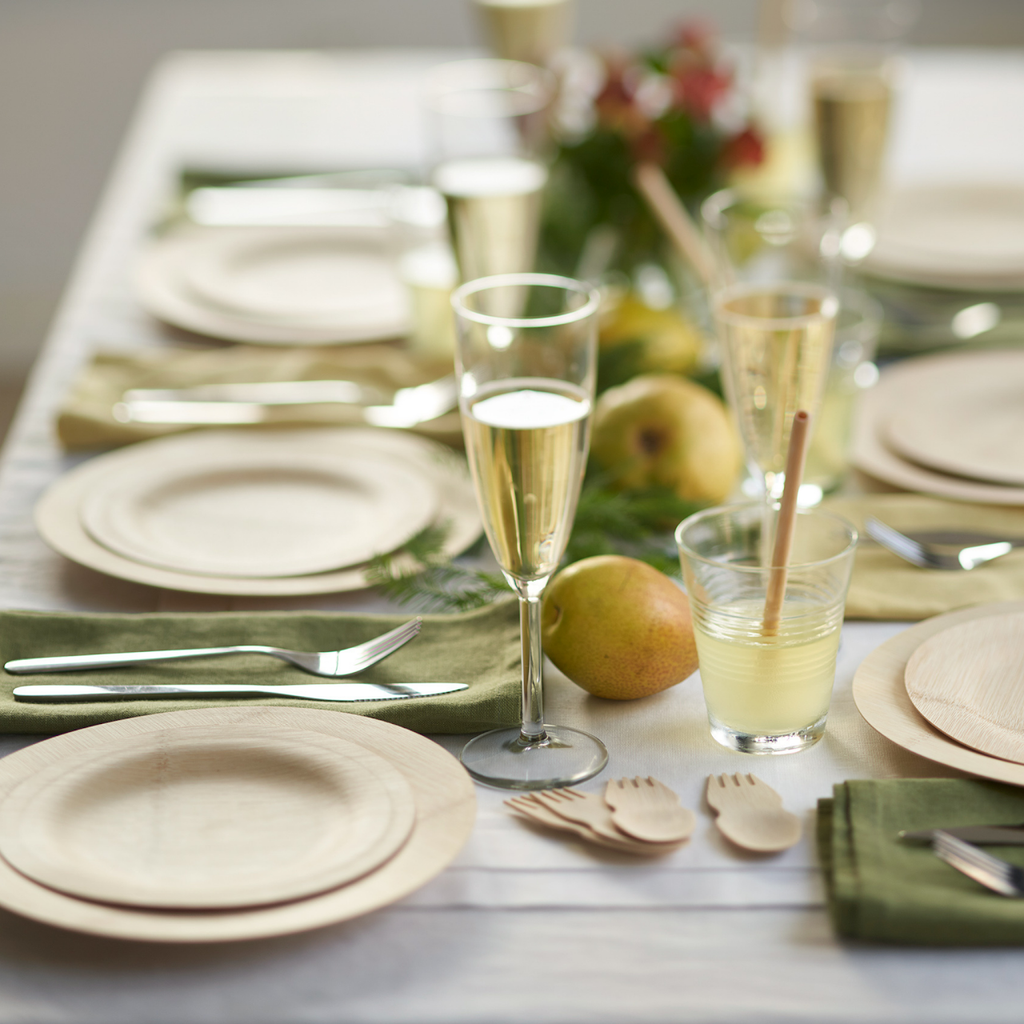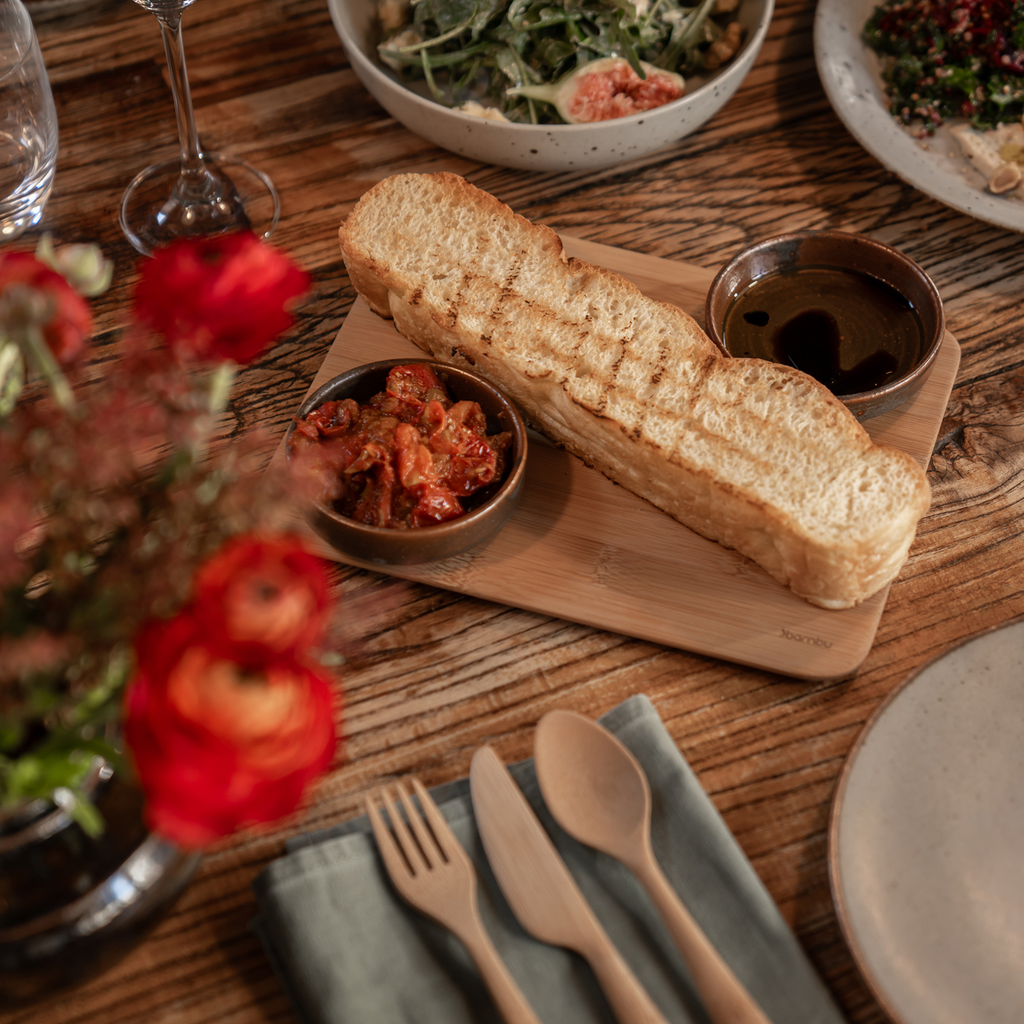Plastic utensils are falling out of vogue for their detrimental environmental impact. And a slew of sustainable biodegradable tableware options are hitting the market. Biodegradable and compostable utensils are a common sight now, but they’re not all the same. Here’s what you need to know to pick a pair that’s as eco as it sounds.
With a whopping 40,000,000,000 plastic utensils being sent to the landfill every year, a low-waste alternative has long been needed. Now, biodegradable utensils and compostable cutlery are the preferred eco-choice. But depending on what they’re made of (and how they’re made), many aren’t as green as they seem.
Compostable Vs. Biodegradable Tableware
Often the words ‘compostable’ and ‘biodegradable’ are used interchangeably. But there’s a distinct difference between the two.
Biodegradable utensils will eventually break down in the natural environment. This term is loosely regulated, and a ‘biodegradable’ utensil can be one that takes 5-10 years (or even longer) to break down. There’s no guarantee that so-called biodegradable tableware will break down into an environmentally safe form. In some instances, even plastic has been marketed as biodegradable. Because of the loose regulation and confusing nature of the term, it’s best to look for utensils that are certified as compostable.
Compostable utensils are made from materials that will break down either in a backyard composting environment (like a compost pile). Or in a commercial compost facility. Compostable utensils require third-party testing in order to be certified as compostable. And they must break down completely into pure, healthy, soil in a certain amount of time. Most commercial compost facilities require items to break down in 80 days or less. At a home compost bin, the compost cycle can take up to two years.
Compostable utensils must go through third-party certification to prove that they break down into soil in a short time. So, they’re a more environmentally sound choice. However, the environment in which compostable utensils are certified to break down in (as well as what they’re made of), are important factors to consider when determining their true eco-benefit.
Materials Matter
We know that plastic is bad, but what’s better? The materials that make up the eco cutlery and compostable utensils you choose play a big part in their impact on the environment.
What are compostable utensils made ?
Compostable utensils are commonly made of bamboo or sugarcane. These two types of plant based utensils have different environmental impacts and different levels of compostability. Here’s what you need to know about each one.
Bamboo Cutlery
Bamboo utensils are one of the cleanest choices for disposable cutlery. Depending on the company you buy from, they will be made from 100% bamboo, which is a sustainable, natural material. Bamboo grows much faster than wood. And it can be harvested without killing the plant itself. It’s also naturally pest-resistant and is typically grown without the need for pesticides. Bamboo utensils can also be finished without glues or lacquers, which keeps the production process chemical-free.
When it comes to performance, bamboo is extremely strong. In fact, it’s the strongest woody plant on Earth! The short fiber of the bamboo plant also makes it harder for bamboo utensils to bend.
Sugarcane
Sugarcane, or bagasse, utensils are made from the leftover stalks of the sugarcane plant. While this, too, is a natural, plant-based material, it has a much bigger impact on the environment. Sugarcane is an extremely water-intensive crop. When it’s grown, the land has to be clearcut for its planting. This can damage the soil health and lead to erosion. Sugarcane is not pest-resistant, so heavy chemical pesticides are often used in its production.
When put to the test, sugarcane utensils tend to bend easily with use. It is semi-resistent to heat, but may lose strength when put into contact with hot foods.
Are compostable utensils actually compostable?
Utensils that are certified as compostable will break down, but only in the right environment. Some of the most popular options for compostable utensils, like sugarcane, are only compostable in commercial compost facilities. When commercially compostable utensils are sent into an at-home compost environment, they won’t break down. Compostable utensils are not recyclable. And when they’re tossed in the landfill? Commercially compostable utensils may take decades or more to decompose.
Because of these factors, many compostable utensils end up in the same place as plastic utensils. The landfill. Often, consumers aren’t sure how to dispose of compostable utensils. And utensils made from sugarcane look nearly identical to plastic utensils. This can lead to compostable utensils being sent to recycling facilities and to the landfill.
In order for compostable utensils to be a better choice, they must be disposed of properly. Knowing if the utensils you use are commercially or backyard compostable is an important step. Here’s how you can tell if the utensils you’re using really are compostable:
How do you know if utensils are compostable?
A trustworthy compostable utensil will have a certification that proves its compostability. Look for certifications like BPI (Biodegradable Product Institute) and CMA (Compost Manufacturing Alliance). Without third-party certification, it’s hard to know if an item really is compostable.
Even with a certification, you’ll need to determine whether your compostable tableware is commercially compostable, compostable in your backyard. Or, both. Look out for the words “commercially compostable only.” If this label exists, then your compostable utensils will not break down in a backyard compost bin. And they can last in the landfill for years.
So, what are the best compostable utensils?
For most people, the best compostable utensils are those made from bamboo. Because bamboo is a natural, renewable resource, its production process is low-impact. Bamboo utensils are strong, heat resistant, and water resistant.
Many bamboo utensils are also compostable in both backyard and commercial compost facilities. Many Americans still don’t have access to commercial composting. So choosing bamboo utensils ensures that more compostable utensils are properly disposed of.
Additionally, bamboo utensils look distinctly different from plastic utensils. With their woody makeup, it’s easier to recognize that these utensils shouldn’t be recycled. This helps keep recycling streams free of contamination. And makes it more likely that bamboo utensils will make it to a compost facility.
Biodegradable tableware can often be the product of greenwashing. And properly disposing of compostable utensils can be slightly confusing. But alternatives like compostable bamboo utensils offer a more planet-friendly choice. When properly disposed of, the best compostable utensils offer a zero-waste solution for eating on the go.
Say goodbye to plastic and hello to bamboo! Shop CMA-certified compostable bamboo utensils and plates.








